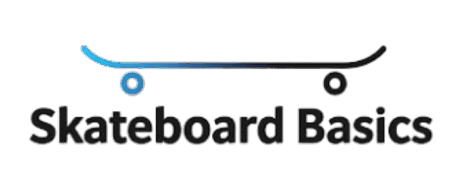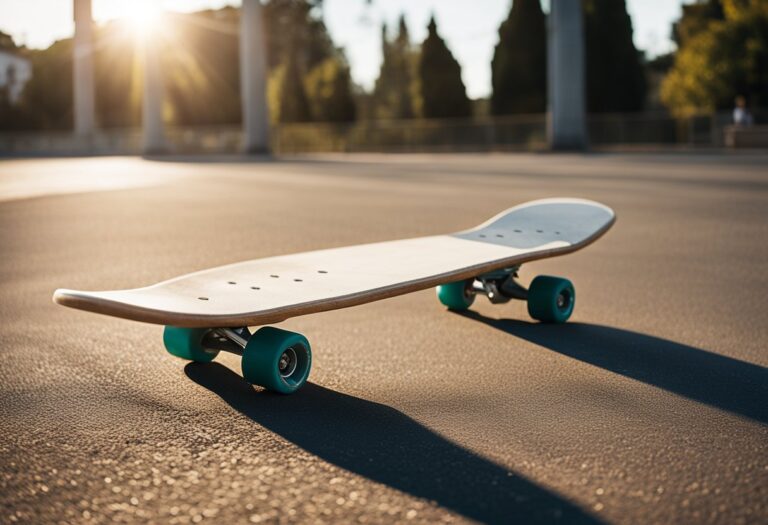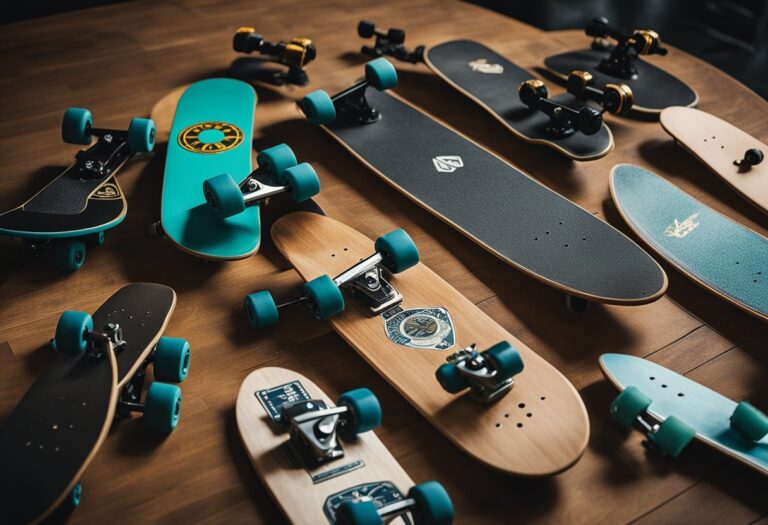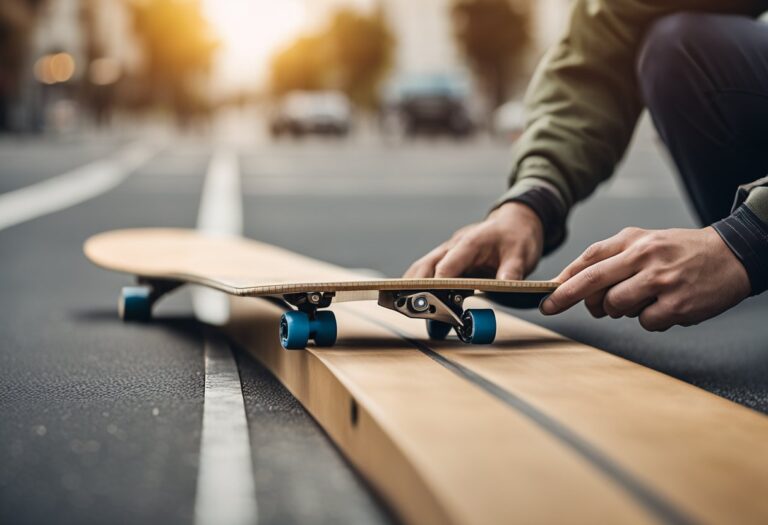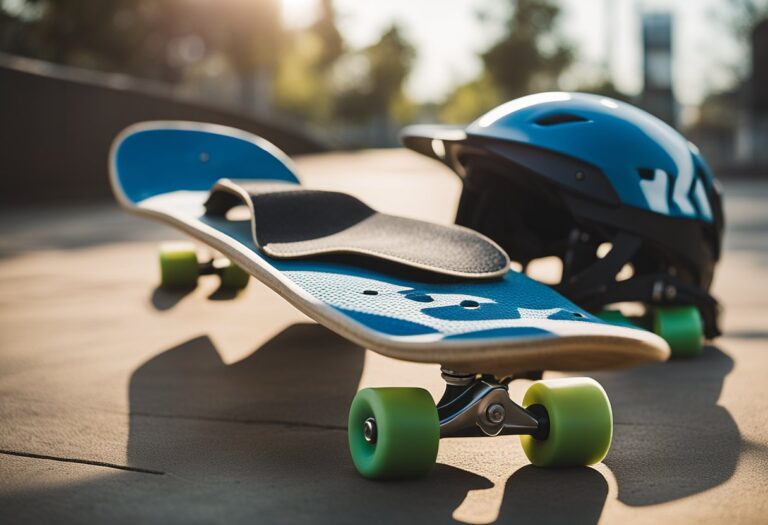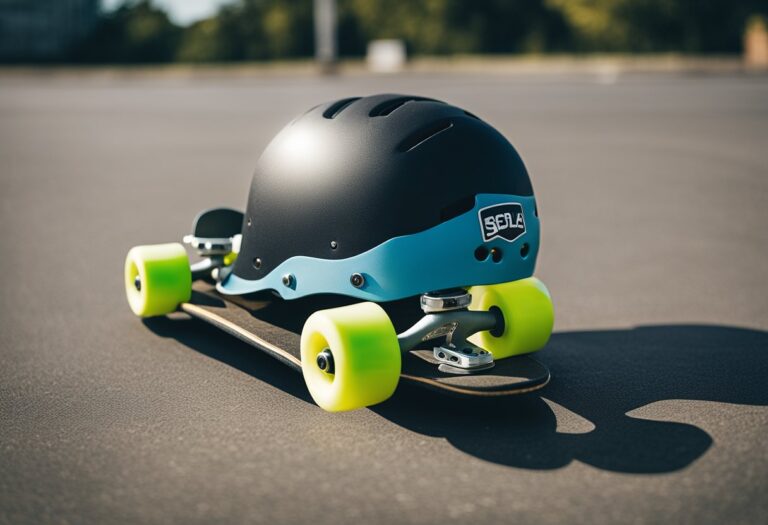What are the Easy Tricks for Beginner Skateboarders?
Skateboarding is a fun and exciting sport that has been around for decades. It involves riding on a board with four wheels and performing tricks and stunts. For beginners, skateboarding can be intimidating, but with the right tricks and techniques, anyone can learn to ride and perform basic tricks.

Getting started with skateboarding requires a good quality skateboard, protective gear, and a willingness to learn. Beginners should start by learning how to balance on the board and push off with one foot. Once they have mastered these basic skills, they can move on to more advanced techniques such as turning, stopping, and carving.
For those who are just starting out, there are some easy tricks that can be learned quickly and easily. These include the ollie, kickflip, and heelflip. These tricks are the foundation of skateboarding and will help beginners to progress to more advanced tricks. With practice and patience, anyone can become a skilled skateboarder and enjoy the thrill of riding and performing tricks.
Key Takeaways
- Beginners should start by learning basic skills such as balancing and pushing off.
- Easy tricks such as the ollie, kickflip, and heelflip can be learned quickly and easily.
- With practice and patience, anyone can become a skilled skateboarder.
Getting Started with Skateboarding

Choosing the Right Skateboard
As a beginner, it’s important to choose the right skateboard that suits your needs. The first thing to consider is the size of the board. A wider board provides more stability, while a narrower board allows for more maneuverability. It’s recommended to start with a board that is 7.5 to 8 inches wide.
The type of skateboard also matters. There are two main types of skateboards: street and cruiser. Street skateboards are designed for tricks and are typically smaller and lighter. Cruiser skateboards are larger and more stable, making them ideal for cruising around town.
Safety Gear Essentials
Skateboarding can be a fun and exciting sport, but it can also be dangerous if you’re not properly equipped. Safety gear is essential for beginners and should include a helmet, knee pads, elbow pads, and wrist guards. It’s important to wear all of the gear every time you skate to protect yourself from injury.
Finding Your Stance
Before you start skating, you need to determine your stance. Most people are either regular or goofy footed. Regular footed means your left foot is in front and goofy footed means your right foot is in front. To find out which foot should be in front, stand with your feet shoulder-width apart and have someone push you from behind. The foot you step forward with is your front foot.
Once you’ve determined your stance, place your front foot on the board with your toes hanging off the edge. Keep your back foot on the ground and push off with it to get moving. It may take some practice to find your balance, but with time and patience, you’ll be able to ride confidently.
Basic Skateboarding Skills

Standing on the Skateboard
Before attempting any tricks, beginners need to learn how to stand on the skateboard properly. The first step is to place the board on a flat surface and stand with feet shoulder-width apart. Then, put one foot on the board’s tail and push off with the other foot to get rolling. Once the skateboard is moving, place the other foot on the board’s front bolts and stand with knees slightly bent and weight evenly distributed.
Pushing Off and Rolling
Pushing off and rolling is the next step after standing on the skateboard. Beginners should start by pushing off with one foot while keeping the other foot on the board. Once the skateboard is rolling, the back foot should be placed on the board’s tail while the front foot is placed on the board’s front bolts. To maintain balance while rolling, the knees should be slightly bent and the weight should be distributed evenly.
Turning Techniques
Turning on a skateboard is a fundamental skill that every beginner should learn. To turn, the skateboarder should shift their weight to the toes or heels of the foot on the opposite side of the direction they want to turn. For example, if they want to turn left, they should shift their weight to the toes of their right foot. The skateboarder should also lean slightly in the direction they want to turn.
Stopping Safely
Stopping safely is just as important as learning how to roll and turn. The easiest way to stop is by dragging the back foot on the ground. This technique is called a foot brake. To perform a foot brake, the skateboarder should shift their weight to the front foot and drag the back foot on the ground until the skateboard comes to a stop. Another stopping technique is to turn the skateboard perpendicular to the direction of travel and let it come to a stop. This technique is called a power slide.
First Tricks to Learn

As a beginner skateboarder, it can be overwhelming to figure out where to start. Luckily, there are a few tricks that are considered fundamental and will help you build a strong foundation for more advanced tricks in the future. Here are three tricks that every beginner skateboarder should learn:
The Ollie
The ollie is the most important trick to learn as a beginner skateboarder. It is the foundation for many other tricks and involves jumping with your skateboard. To perform an ollie, follow these steps:
- Place your back foot on the tail of the skateboard and your front foot in the middle of the board.
- Bend your knees and crouch down.
- Quickly jump up and slide your front foot towards the nose of the skateboard.
- As you slide your foot, jump with your back foot and lift the skateboard off the ground.
- Level out the skateboard in mid-air by leveling out your feet.
- Land back on the skateboard with both feet.
The Manual
The manual is another fundamental trick that involves balancing on your back wheels while rolling. It is a great way to improve your balance and control on the skateboard. To perform a manual, follow these steps:
- Start rolling at a comfortable speed.
- Shift your weight back towards the tail of the skateboard.
- Lift your front wheels off the ground and balance on your back wheels.
- Keep your knees bent and your weight centered over the back wheels.
- Try to maintain the manual for as long as possible.
- Lower the front wheels back to the ground to end the trick.
The Frontside 180
The frontside 180 is a simple trick that involves spinning the skateboard 180 degrees while rolling. It is a great way to improve your board control and can be used as a building block for more advanced tricks. To perform a frontside 180, follow these steps:
- Start rolling at a comfortable speed.
- Begin turning your shoulders and hips towards the direction you want to spin.
- Pop an ollie and start spinning the skateboard with your feet.
- Keep your eyes on the skateboard as it spins around.
- As the skateboard completes the 180-degree spin, land back on it with both feet.
- Roll away smoothly to complete the trick.
By mastering these three tricks, beginner skateboarders can build a strong foundation for more advanced tricks in the future. Remember to practice consistently and always wear proper safety gear when skateboarding.
Practice and Patience

Consistent Practice Habits
Skateboarding requires consistent practice habits to improve. Beginners should aim to practice regularly, preferably daily, to build muscle memory and develop their skills. It’s important to start with the basics and work on perfecting them before moving on to more advanced tricks.
Beginners should also focus on practicing in a safe environment, such as a skatepark or a flat, smooth surface with no obstacles. They should also wear proper safety gear, including a helmet, knee pads, and elbow pads, to prevent injuries.
Setting Achievable Goals
Setting achievable goals is an important part of skateboarding. Beginners should start with simple goals, such as learning to balance on the board and pushing off. As they progress, they can set more challenging goals, such as learning to ollie or kickflip.
It’s important to remember that progress takes time and patience. Beginners should not get discouraged if they don’t achieve their goals right away. Instead, they should keep practicing and focus on improving their skills.
Overall, consistent practice habits and setting achievable goals are essential for beginner skateboarders. With time and patience, anyone can improve their skills and become a great skateboarder.
Skatepark Etiquette

Understanding Skatepark Flow
Skateparks can be busy places, especially during peak hours. It’s important to understand the flow of the park and how to navigate it safely. Beginners should always start in the less crowded areas of the park until they feel comfortable enough to move on to the more challenging sections.
When entering the park, it’s important to take a moment to observe the flow of the skaters and the obstacles they are using. This will help beginners to avoid collisions and stay safe. It’s also important to follow the directional flow of the park. If the park has a designated direction, be sure to follow it to avoid confusion and accidents.
Respecting Other Skaters
Skateparks are a community, and it’s important to show respect to other skaters. This includes waiting your turn to use an obstacle and not cutting in front of other skaters. If someone is already using an obstacle, wait until they are finished before attempting it yourself.
It’s also important to be aware of other skaters around you. Avoid skating too close to others and be mindful of their personal space. If you accidentally collide with another skater, apologize and make sure they are okay.
In addition, beginners should avoid sitting or standing on obstacles as this can be dangerous and disruptive to other skaters. It’s also important to keep the park clean by disposing of trash properly and respecting the park’s rules and regulations.
By following these simple rules of skatepark etiquette, beginners can have a safe and enjoyable experience while learning to skateboard.
Maintenance and Upkeep

Cleaning Bearings
As a beginner skateboarder, it is important to keep your bearings clean to ensure smooth rides and prevent damage to your skateboard. Bearings can accumulate dirt and debris from riding on different surfaces, and cleaning them regularly can help prolong their lifespan.
To clean your bearings, remove them from the wheels and use a solvent or bearing cleaner to soak them for a few minutes. After soaking, use a cloth or paper towel to wipe off any excess dirt and debris. Finally, apply a lubricant to the bearings to keep them running smoothly.
Replacing Skateboard Parts
Skateboards are made up of different parts that can wear down over time, especially with regular use. As a beginner skateboarder, it is important to know when to replace these parts to ensure your safety and prevent damage to your skateboard.
Some parts that may need replacing include the wheels, trucks, and deck. Signs that these parts need replacing include cracks, excessive wear and tear, and difficulty maneuvering the skateboard.
When replacing parts, it is important to choose high-quality replacements that are compatible with your skateboard. This can help ensure optimal performance and prevent further damage to your skateboard.
Overall, regular maintenance and upkeep of your skateboard can help prolong its lifespan and ensure safe and enjoyable rides.
Frequently Asked Questions

What are the first basic tricks to learn as a beginner skateboarder?
As a beginner skateboarder, it is important to start with the basics. The first trick to learn is the Ollie, which is the foundation for most skateboard tricks. Other basic tricks include the Kickflip, the Heelflip, and the Pop Shove-it.
Which skateboard tricks can I master within a single day?
It is important to understand that mastering a skateboard trick takes time and practice. However, some simple tricks that beginners can learn within a single day include the Manual, the Nose Manual, and the Fakie Ollie.
How can I perform simple skateboard jumps as a beginner?
To perform simple skateboard jumps as a beginner, you should start by practicing the Ollie. Once you have mastered the Ollie, you can move on to more advanced jumps such as the Kickflip or the Heelflip.
What sequence of tricks should beginners follow from easiest to hardest?
Beginners should start with the basics such as the Ollie, Kickflip, Heelflip, and Pop Shove-it. Once these tricks are mastered, beginners can move on to more advanced tricks such as the 360 Flip, the Hardflip, and the Varial Flip.
What are the names of skateboard tricks suitable for beginners?
Some skateboard tricks suitable for beginners include the Ollie, Kickflip, Heelflip, Pop Shove-it, Manual, Nose Manual, Fakie Ollie, and the 50-50 Grind.
What should be the initial steps for a beginner skater to start doing tricks?
The initial steps for a beginner skater to start doing tricks should be to practice the basics such as balance, foot placement, and pushing. Once these skills are mastered, beginners can move on to learning the Ollie and other basic tricks. It is important to start with the basics and progress at your own pace.
